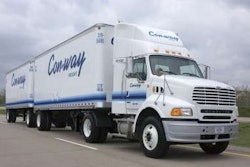EPA’s greenhouse gas finding is a major milestone
On April 17, the U.S. Environmental Protection Agency tentatively concluded that current and projected concentrations of six key greenhouse gases in the atmosphere threaten the public health and welfare. The consequences of this major declaration may take years to realize, but they could change the way you do business significantly.
The so-called “endangerment finding” under the Clean Air Act is sort of like the “clear and present danger” determination that gives the president sweeping powers to preserve national security. A second “cause or contribute finding” proposes to declare that the combined emissions of four of those greenhouse gases from new motor vehicles and motor vehicle engines contribute to atmospheric concentrations.
One interesting aspect of these findings is that not all greenhouse gases are inherently toxic. In fact, carbon dioxide is considered to be the most important of the greenhouse gases – especially as it relates to vehicles. And yet, you exhale carbon dioxide continuously. Plants actually need it. So EPA isn’t saying carbon dioxide is an airborne toxin. Rather, the notion is that enormous amounts of carbon dioxide over a period of many years lead to climate change, which in turn could have some pretty nasty consequences in years and decades to come.
Regulation of greenhouse gases has grown increasingly likely since the 2008 elections, which gave the Democrats the White House and expanded their majorities in the House and Senate. Less than a week after taking office, President Obama ordered EPA to review whether the Bush administration’s denial of a waiver for California to adopt limits on greenhouse gas emissions from new motor vehicles was appropriate.
In March, EPA proposed to require certain companies, including truck manufacturers, to report greenhouse gas emissions. The agency isn’t proposing to require fleet owners to report “in-use” emissions data, though it requested comments on the issue.
Congress also is beginning to look at greenhouse gases again. For example, the House Energy and Commerce Committee held several days of hearings on the American Clean Energy and Security Act of 2009 – a draft bill that includes measures aimed at reducing global warming, including a cap-and-trade system for electric utilities, oil companies and some other large industrial sources.
EPA’s proposed findings could open the door to regulations that likely would take years to develop and enforce, but they likely serve a more powerful and timely purpose. With the prospect of impending EPA regulation, the business community actually might rush to Congress hoping to strike a political compromise. Even with larger Democratic margins, Congress as a whole likely would be more responsive than EPA to the costs and burdens imposed by new climate-control mandates and would offer more market- and incentive-based options and opportunities. In other words, it’s like the old good cop/bad cop routine, except maybe in this case it’s really bad cop/worse cop. And with the threat of California Air Resources Board regulation, we actually might be looking at bad cop/worse cop/worst cop.
It’s not clear how all of this will affect the trucking industry. Most of the current focus is on manufacturers rather than equipment operators. This approach probably will be easiest to implement and enforce and even might have some upsides in the form of improved fuel economy. But you also can bet that trucks will become even more expensive and technically complex.
Nor are fleet operators out of the woods. While the SmartWay Transport Partnership remains a voluntary program, its reporting tools are becoming more sophisticated – part of what the staff calls SmartWay 2.0 – and are beginning to reflect the level of precision you would expect from a regulatory regime.
One way or the other, EPA’s latest move isn’t just smoke and mirrors.













